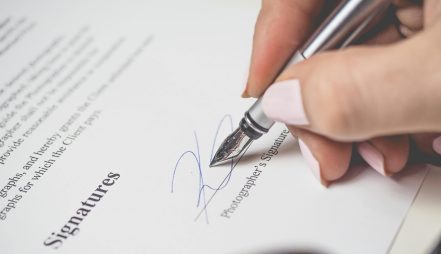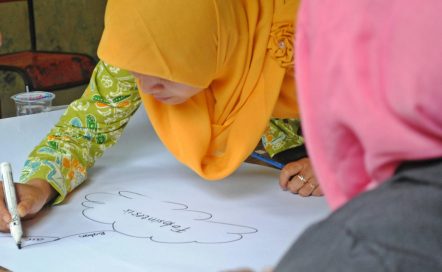Using good old pen and paper
Smita Banerjee makes a strong case for using old-fashioned pen and paper to make notes, plan and work out ideas.
A disagreement

A few days ago, during a discussion at our school, the topic of pen usage arose in the staffroom. One member of staff suggested that nowadays for most people, pens are primarily used for signatures. I disagreed. As a Mathematics and Physics educator, I rely heavily on my pen for various tasks. From jotting down daily Physics notes to solving Math problems before class, my pen is an indispensable tool. Writing helps me retain information, ensuring it is firmly lodged in my memory. Moreover, incorporating visual graphics into my notes helps me in framing comprehensive lessons and strengthens my ability to associate concepts.

Of course I could do this digitally with a stylus and tablet, but my note pad and pen are simple tools, always with me and they never run out of charge!
Significant cognitive advantage
In recent times, digital media has revolutionized the way we access information. The traditional act of using a pen or pencil to write, highlight, or make notes seems to be dwindling. While some students find comfort in reading and highlighting digital copies, in my view, there’s a distinct advantage to engaging with hard copies. Pen and paper annotations help in active engagement with the material, comprehension and retention.
While it may not always be feasible to acquire hard copies of every book, in my view, engaging in note-making after reading, whether from a hard copy or a digital one, can significantly enhance a learning experience. One effective method is to read a paragraph and then summarize it in my own words, or to condense a topic into a short note. The ancient art of the precis I find indispensable for my own learning and I strongly recommend it to my students!
You can, of course get carried away! I recall using different colored pens during my younger years for all sorts of over-complex annotation. However, I’ve come to realize that using too many colors can distract from understanding the content, so now I use just two colors. I use one pen for writing the topic name and titles/subtitles, while the other can be used for writing the content. However I do it, my primary focus is always on helping my quick and easy comprehension when I review the notes.
Language skills across the curriculum
Research seems to confirm for my preference for writing things down. It has profound effects on the brain, and numerous scientific studies have described the cognitive benefits of this activity. Note-making is also a skill that improves with practice. Crafting effective notes not only helps quicker content revision but also creates a visual impact on our brains, aiding retention. During my childhood summer breaks, my mother encouraged my sister and me to write one page in all three of our languages: English, Hindi, and Marathi. This exercise not only enhanced our penmanship but also allowed us to become proficient in our native language, Bengali, which wasn’t part of our school curriculum but was taught to us by our mother.My note making became a strong habit!
Solving math problems in my notebook has consistently provided me with clarity of thought, enabling me to think through and solve complex problems. It’s good for my perseverance as well – much needed when tackling challenging mathematical concepts!
When it comes to math and science, writing brings more than literacy and communication advantages. The practice of writing can enhance the brain’s intake, processing, retaining, and retrieving of information. Through writing, students can increase their comfort with and success in understanding complex material, unfamiliar concepts, and subject-specific vocabulary.
From: The Brain-Based Benefits of Writing for Math and Science Learning
Read, think, write or sketch
When teaching my students, I encourage them to read from either soft copies or textbooks and then write in bullet points or pointers. Taking running notes in the classroom helps students stay attentive and of course enables them to refer back to class notes at a later point in time.

Visual learners can make up drawings and diagrams and sketches to represent information, combining images with text to create visual summaries or explanations. Mind maps are of course also effective in organizing thoughts and understanding complex relationships. Visual notes engage both hemispheres of the brain and can enhance memory retention.

Creating flashcards for key terms, definitions, or concepts is a creative method for self-testing and reviewing information repeatedly. One side of the flashcard can be used for the term, while the other side can contain the definition. Making up charts is also useful for summarizing data, organizing comparisons, and visualizing relationships. These various techniques cater to different learning styles and can significantly enhance students’ understanding and retention of the material.
Simple and motivating
Writing is also more than just summarizing what we read in our own words. It’s just such a flexible activity, and takes various forms, such as expressing our thoughts, reflecting on our experiences, maintaining a daily diary, and more. I have found that engaging in these forms of writing can also assist in regulating emotions and stress levels, while also fostering self-reflection and insight. Physically writing down your agenda or to-do list is a simple yet powerful productivity tool that can help you stay organized, focused, and motivated as you work towards achieving your goals.
Writing for me is such a powerful cognitive activity that also seems to enhance emotional well-being and personal development. For me it’s been a habit worth cultivating for greater efficiency and success in both my personal and professional endeavours.
I thoroughly recommend it!
 Smita Banerjee, Educator, The Northstar School, Rajkot, Gujarat India
Smita Banerjee, Educator, The Northstar School, Rajkot, Gujarat India
FEATURE IMAGE: by Yannick Pulver on Unsplash
Support Images: by energepic.com:Pexels, Glenn Carstens-Peters on Unsplash, cottonbro studio: Pexels,
and Husniati Salma on Unsplash
More about Northstar School:

